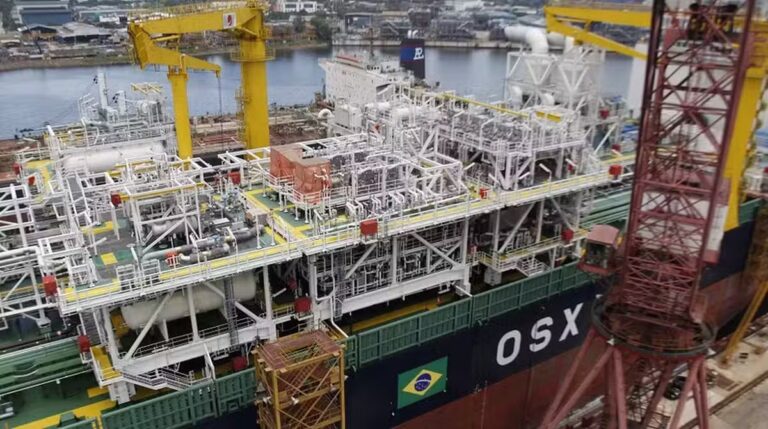
According to data released by IBGE (Brazilian Institute of Geography and Statistics) this Friday (14th), GDP (gross domestic product) in 2023 grew in all states and federal districts. According to the agency, this has not happened since 2021.
The highest increases in 2023 were in Acre (14.7%), Mato Grosso do Sul (13.4%), Mato Grosso (12.9%), Tocantins (7.9%) and Rio de Janeiro (5.7%).
The states with the smallest changes were Rio Grande do Sul (1.3%), Rondônia (1.3%), Para (1.4%), and São Paulo (1.4%). Brazil’s GDP increased by 3.2% in 2023.
IBGE said that the strong performance of agriculture, especially soybean cultivation, made a decisive contribution to the growth records of Acre (14.7%), Mato Grosso do Sul (13.4%), Mato Grosso (12.9%) and Tocantins (7.9%).
The increase in Rio de Janeiro (5.7%) was driven by advances in the extractive industry, with a focus on oil and gas.
Thirteen states had growth rates below the national average (3.2%). According to IBGE, in Rio Grande do Sul, one of the regions with the smallest increase (1.3%), declines in manufacturing industries such as oil refining and machinery and equipment manufacturing had an impact on performance.
Rondônia was also one of the regions with the least variation (1.3%), but growth was limited by the drought that occurred in the northern region.
“This has resulted in a reduction in electricity generation and electricity, gas, water, wastewater, waste management and decontamination activities,” said IBGE Regional Accounts Manager Alessandra Poza.
In the case of São Paulo, the country’s main economy, the result of 1.4% was influenced by the negative contribution of manufacturing. The institute mentioned the agrochemical and machinery and equipment manufacturing sectors.
The Southeastern region’s share of GDP decreased by 0.3 percentage points from 2022 to 2023, remaining at 53%. The South (+0.2 points) and North (+0.1 points) increased, reaching 16.8% and 5.8%, respectively. The Northeast (13.8%) and Midwest (10.6%) maintained participation.
SP and RJ lose space in 21 years
IBGE also provides a longer-term comparison from 2002 to 2023.
In this section, the Midwest and Northern regions recorded the largest relative increases in their participation in the country’s GDP, recording advances of 2 and 1.1 percentage points.
The only major region to lose space during this period was the Southeast (-4.4 points). The weight of the economies of São Paulo (-3.4 points) and Rio de Janeiro (-1.7 points) decreased.
IBGE, on the other hand, highlighted the case of Mato Grosso, which saw the largest increase in the number of participants (1.2 points), followed by Santa Catarina (1 point) and Mato Grosso do Sul (0.6 points).
From 2002 to 2023, the country’s GDP grew by an average of 2.2% per year. Growth rates were highest in the Midwest and North. The fluctuations were 3.4% and 3.2% per year.
Meanwhile, the Northeast was close to the national average at 2.4% per year. The Southeast and South recorded the smallest increases (2% and 1.9%).
Among the states, Mato Grosso and Tocantins were the main highlights, with average annual volatility of 5.2% and 4.9%, respectively. This is followed by Roraima (4.5%), Acre (3.9%) and Mato Grosso do Sul (3.7%).
Rio de Janeiro and Rio Grande do Sul remain the two states with the lowest average annual growth rates, at 1.6% and 1.4% per year.



